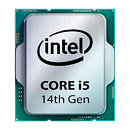
Intel Teases Upcoming Unveiling of "New Arc Pro GPUs" - Insiders Predict "Battlemage" B60 Card
Earlier in the week, reports indicated the potential introduction of an Intel Xe2 "Battlemage" B770 gaming graphics card at Computex 2025. Last night, a Team Blue tweet confirmed forthcoming product unveilings: "new Intel Arc Pro GPUs are on the way. See you in Taipei!" In the months leading up to this important trade event, industry watchdogs have drummed up speculation about "Battlemage's" future (or fate). Whispers of 24 GB VRAM-equipped variants emerged late last year—around late January, these theories were connected to an official leak: "3 new PCI IDs for BMG."
Unsurprisingly, VideoCardz has weighed in with some new inside track info—they propose that one of Intel's upcoming professional options will be an "Arc Pro B60 24 GB" model, aka "Developer Edition" (an alleged in-house reference). Despite Sparkle HQ downplaying recent "rogue claims," a company rep (in China) alluded to a possible May/June release of their own custom 24 GB "Battlemage" productivity-oriented card. VideoCardz has picked up on rumors, regarding the "Arc Pro B60's" internal setup. They propose Team Blue's selection of the familiar "BMG-G21" GPU; as used by their Arc Xe2 B580 12 GB and B570 10 GB designs. According to an unnamed inside source, this professional/workstation variant will stick with the usual 192-bit memory interface. Intel's Computex 2025 new product teaser provided a big clue about the speculated "B60" model's cooling solution.
Unsurprisingly, VideoCardz has weighed in with some new inside track info—they propose that one of Intel's upcoming professional options will be an "Arc Pro B60 24 GB" model, aka "Developer Edition" (an alleged in-house reference). Despite Sparkle HQ downplaying recent "rogue claims," a company rep (in China) alluded to a possible May/June release of their own custom 24 GB "Battlemage" productivity-oriented card. VideoCardz has picked up on rumors, regarding the "Arc Pro B60's" internal setup. They propose Team Blue's selection of the familiar "BMG-G21" GPU; as used by their Arc Xe2 B580 12 GB and B570 10 GB designs. According to an unnamed inside source, this professional/workstation variant will stick with the usual 192-bit memory interface. Intel's Computex 2025 new product teaser provided a big clue about the speculated "B60" model's cooling solution.















































































